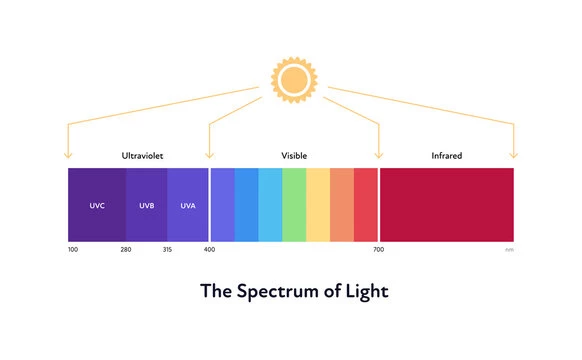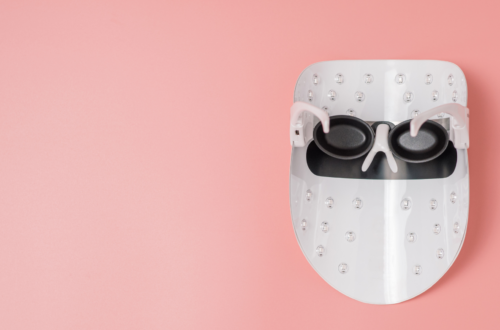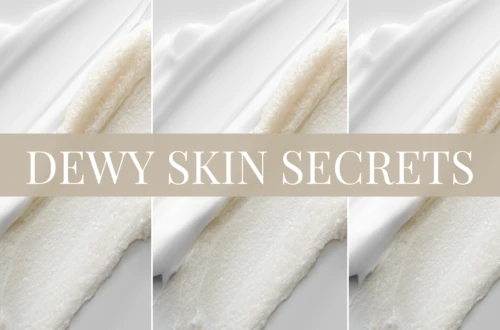Everything You Need to Know About Sunscreen & SPF
We all know by now that we should wear SPF and practice sun safety when planning to be outdoors.
Oh, how times have changed! I come from the generation where during our teenaged years we paid visits to tanning beds in the winter and lathered on baby oil during the summer. Having a golden glow was a statement much like a Juicy Couture tracksuit or low rise flared jeans, all of which seem cringeworthy now.
Sun safety has become a hot topic in recent years as we continue to learn about aging skin, cell damage and skin cancer. Skincare trends now lean toward healthy aging and caring for our skin. While you may already be very well versed in the topic of sun safety, this post is unlocking the secrets of SPF! Here we uncover the details of ultraviolet rays, get into specific details of sunscreen and application, recommend products for both you and your family, and answer FAQs.
As a special gift from Erno Laszlo, enjoy 30% off for a limited time from August 17 – 25th, 2022 with code LAURAAAUG30.

Ultraviolet Rays
On the spectrum of light, ultraviolet (UV) rays fall all the way to the left and are unable to be seen by the human eye. There are two types of ultraviolet rays that can harm your skin by causing damage to the DNA in your skin cells, UVA and UVB.
UVA | Responsible for aging (A = AGING)
UVB | Responsible for sunburns and plays a key role in the development of skin cancer. (B = BURN)
If you watch the weather segment on the news you may notice that they talk about the UV Index especially during the summer months when we spend more time outdoors. The UV Index is defined by the FDA as a scale from 1 – 11, indicating the amount of skin-damaging UV rays that reach the Earth’s surface during the day. Specifically, the number forecasts the amount UV ray exposure at noon when the sun is most prominent. The higher the number, the more dangerous the UV ray exposure.


What is SPF?
SPF stands for Sun Protection Factor and is a measure that is used worldwide to indicate the level of protection a sunscreen offers. The SPF number is an indication of how long it would take the sun’s UV radiation to redden your skin if using the product as directed on the packaging. For example, an SPF 30 indicates that it would take 30 times as long for your skin to begin to burn than without using any SPF.
SPF FACTS
SPF number is a theoretical measure of UVB protection, and below looks at exactly how much UVB radiation different factors offer.
- SPF 15 blocks 93% of UVB radiation.
- SPF 30 blocks 97% of UVB radiation.
- SPF 50 blocks approximately 98% of UVB radiation.
There is no product that offers 100% protection, and so sunscreen should never be your only source of protection. Other ways to protect yourself include wearing wide-brimmed hats, covering yourself with clothing, wearing sunglasses, and staying in shaded areas outdoors.
If planning to be in and out of the pool, it is especially important to look for a sunscreen that is water resistant. The term ‘Water Resistant’ refers to how long a product maintains its SPF factor when exposed to water.
Earlier in this post we mention two types of UV Rays, UVA and UVB. Here, however, you’ll notice that SPF blocks only UVB rays. To protect against both UVA and UVB rays look for a Broad Spectrum sunscreen.
A new term, “full spectrum”, has emerged in recent years. This term has no legal definition and is not regulated. If choosing a product that boasts “full spectrum”, research to see how the company is defining this term and the protection the product offers.
Types of Sunscreen
There are two types of sunscreen, chemical and mineral.
Chemical Sunscreens work by absorbing UV rays and releasing them as heat. The term ‘chemical sunscreen’ comes from the chemical reaction of absorption and heat release.
Ingredients used in chemical sunscreens: Avobenzone, Homosalate, Oxybenzone, Octisalate, Octinoxate, Octocrylene, Omosalate.
Mineral Sunscreens are made of tiny, ground up minerals, titanium dioxide and zinc oxide. This type of sunscreen sits on top of the skin and works by creating a physical barrier to block UV rays from penetrating the skin. Mineral sunscreens are more likely to leave a white cast or white streaks on your skin. If applying mineral sunscreen to your face, look for a tinted sunscreen such as Australian Gold Botanical SPF 50 Tinted Face.
Products
The products you choose to use are such a personal preference! My number one recommendation is to always read the label before you buy and to do your own research. Here is a quick list of my favourite products:
Adults SPF for Body: Australian Gold
Adults SPF for Face: Erno Laszlo
Baby and Child SPF: Blue Lizard (comes with smart cap technology, as seen in the photo below, where the cap turns pink to remind you to reapply sunscreen and inform you of dangerous UV Rays)
SPF FAQ
Do I need to wear SPF indoors?
The short answer is yes. SPF penetrates clouds and windows, so wear your SPF every single day.
Can I mix my SPF with my foundation?
No. Mixing products dilutes the chemicals found within those products and lowers its effectiveness. All products should be put on in separate layers, in the correct order. Below is an example of your AM skincare routine with the doctor founded skincare Erno Laszlo. For more on Erno Laszlo read Dewy Skin Secrets.
Does wearing sunscreen prevent the absorption of Vitamin D?
SPF does not block or prevent the absorption of Vitamin D into your skin. Wearing sunscreen will not create a Vitamin D deficiency.
Is there a sunscreen that is waterproof?
There is no such thing as waterproof sunscreen. There is however, water resistant SPF. A label will typically read, water resistant up to X minutes. This means the SPF factor can remain active while in water for up to a certain amount of time. SPF should be reapplied according to the label on the product you are using.
Do black people, or people with darker skin tones, need sunscreen?
Everyone needs to wear sunscreen, regardless of your skin colour. People with darker skin tones do have more melanin in the skin, which creates pigmentation and naturally provides a little protection from the sun. Sunscreen is much more effective.
Do I need different sunscreens for face and body?
Technically, the answer to this question is no. You can apply one type of sunscreen to both your face and body. However, there are specially formulated options available to individuals that may be prone to breakouts. Some sunscreens such as Erno Laszlo’s Firmarine SPF 30 also include ingredients that help protect your skin from blue light and also target signs of aging.
You May Also Like

LED Light Therapy: What you need to know
26 April 2024
My Summer Beauty Secrets…
3 July 2023
